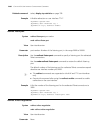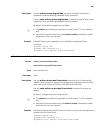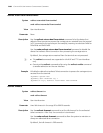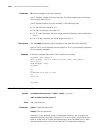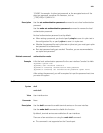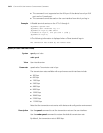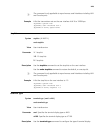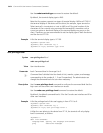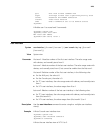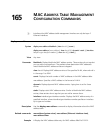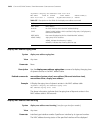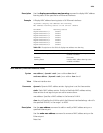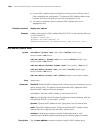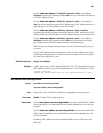
2474 CHAPTER 164: USER INTERFACE CONFIGURATION COMMANDS
Use the undo terminal type command to restore the default.
By default, the terminal display type is ANSI.
Note that the system supports two types of terminal display: ANSI and VT100. If
the terminal display of the device and the client (for example, hyper terminal or
Telnet terminal) is inconsistent or is set to ANSI, and if the total number of the
characters of the currently using command line exceeds 80, anomalies such as
cursor corruption or abnormal display of the terminal display may occur on the
client. Therefore, you are recommended to set the display type of both the device
and the client to VT100.
Example # Set the terminal display type to VT 100.
<Sysname> system-view
[Sysname] user-interface vty 0
[Sysname-ui-vty0] terminal type vt100
user privilege level
Syntax user privilege level level
undo user privilege level
View User interface view
Parameter level: Command level in the range 0 to 3.
n
Command level is divided into four levels of visit, monitor, system, and manage,
corresponding to the number 0, 1, 2 and 3 respectively. The administrator can
change the command level of a user when necessary.
Description Use the
user privilege level command to configure the command level that the
login users on the current user interface can access.
Use the
undo user privilege level command to restore the default.
By default, the default command level is 3 for the Console user interface and 0 for
other user interfaces.
Example # Set the privilege level of the user logging in from VTY 0 to 0.
<Sysname> system-view
[Sysname] user-interface vty 0
[Sysname-ui-vty0] user privilege level 0
# After the user telnets to the device from VTY 0, the terminal will only display
level 0 commands, as follows:
<Sysname> ?
User view commands:
language-mode Specify the language environment
ping Send echo messages



